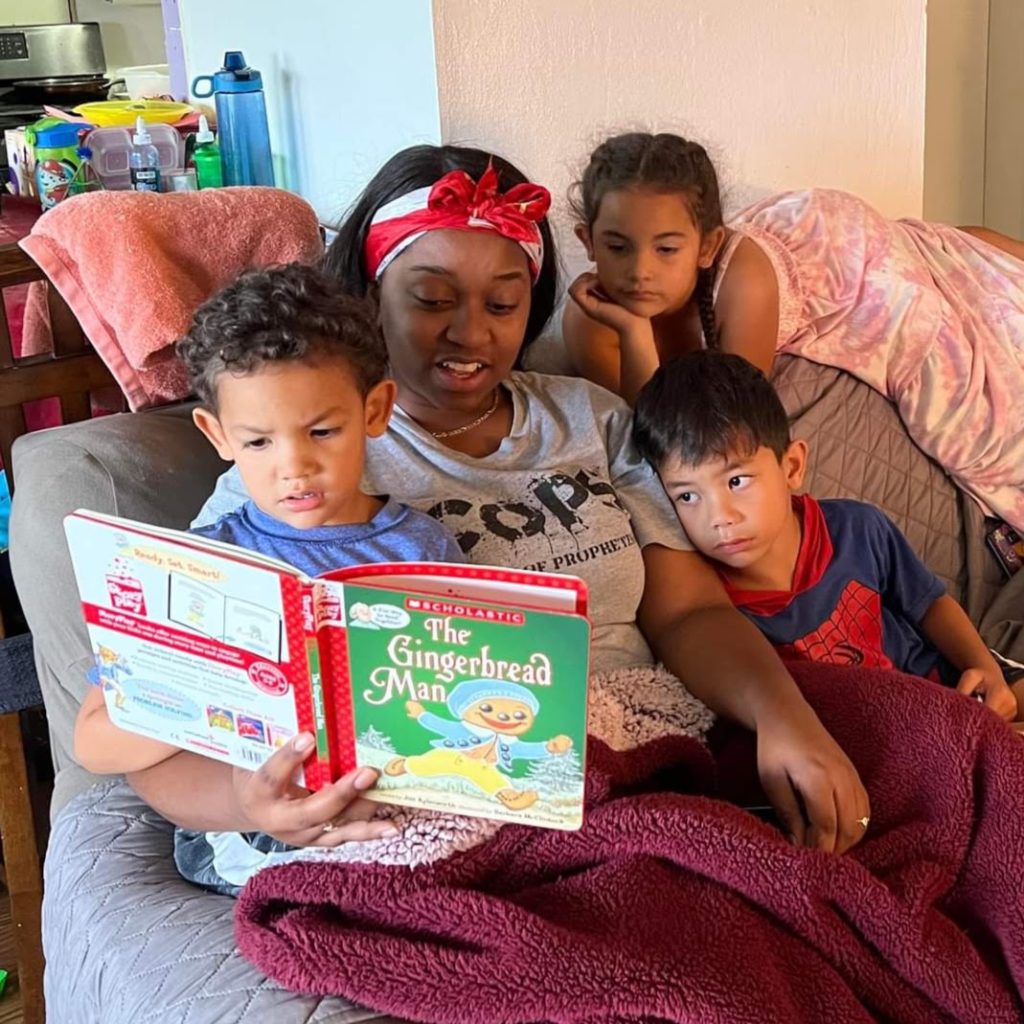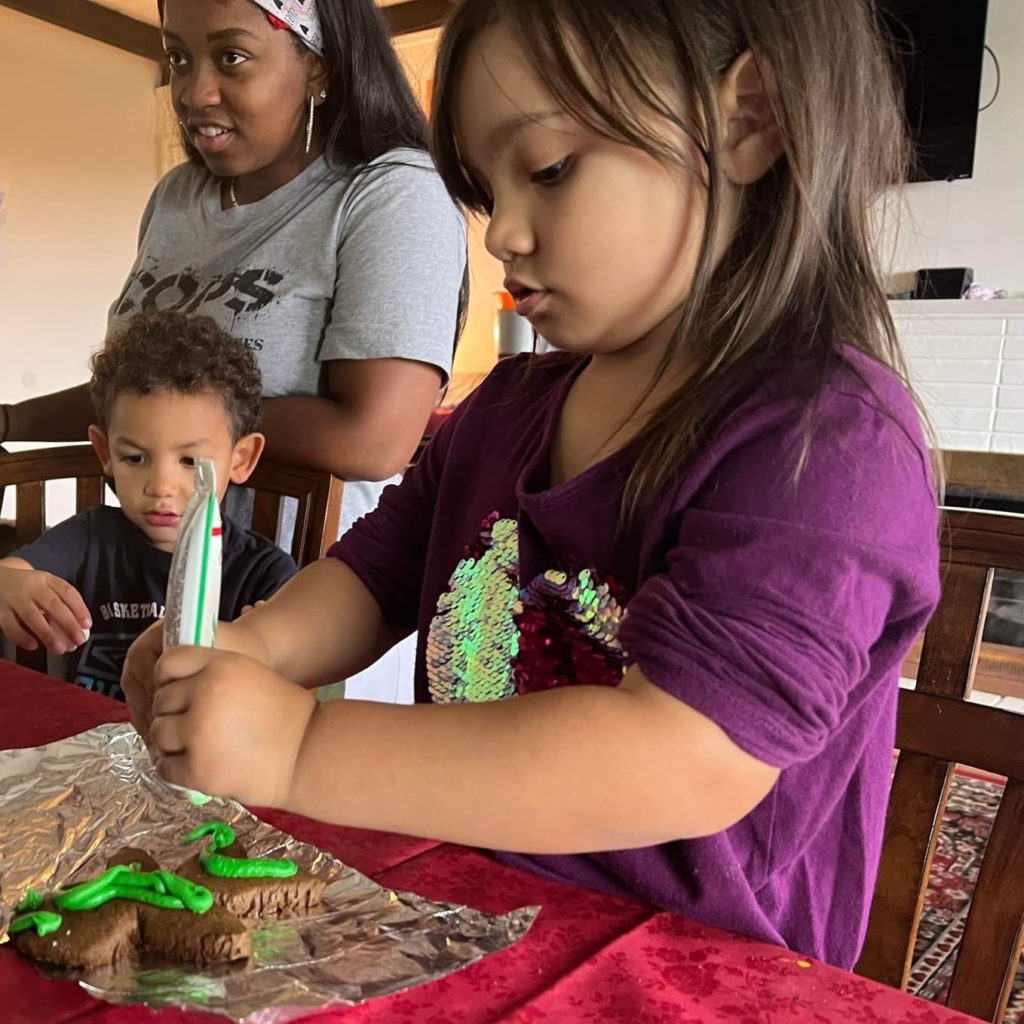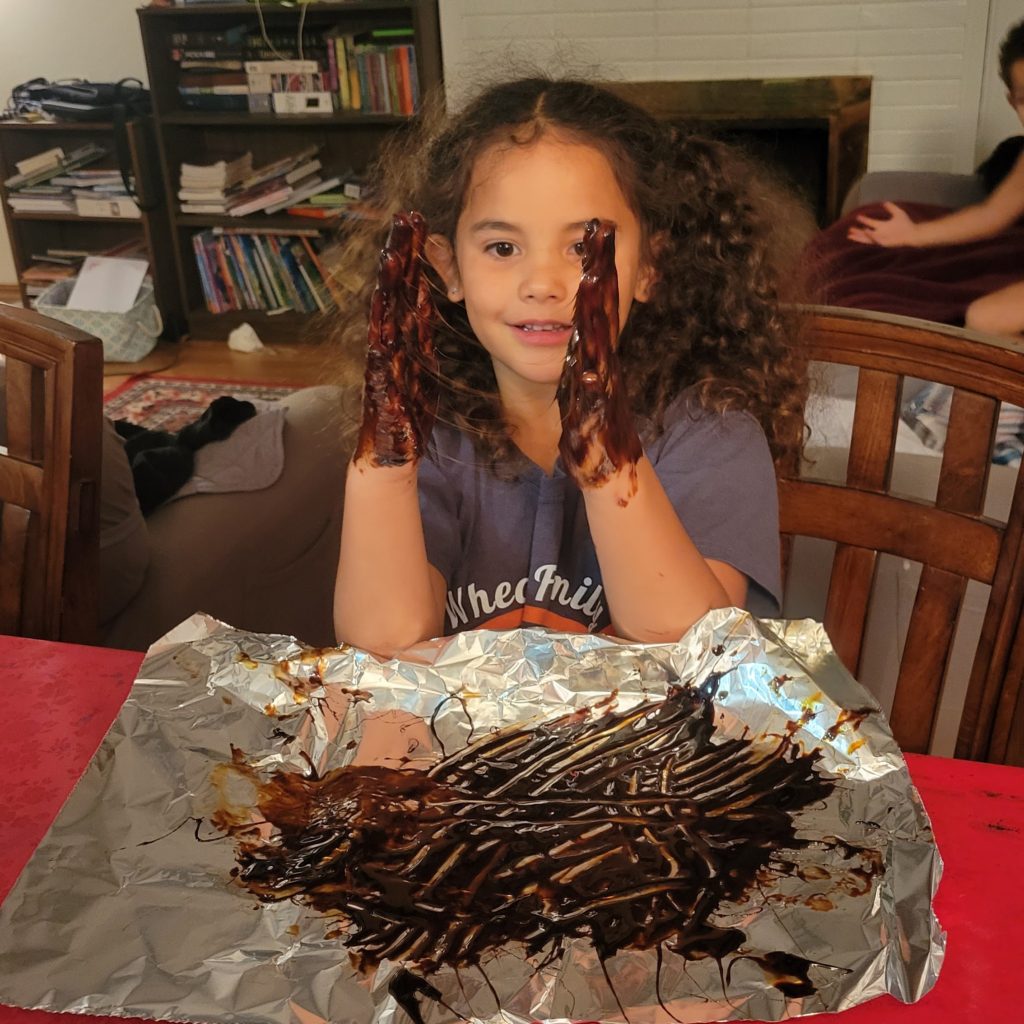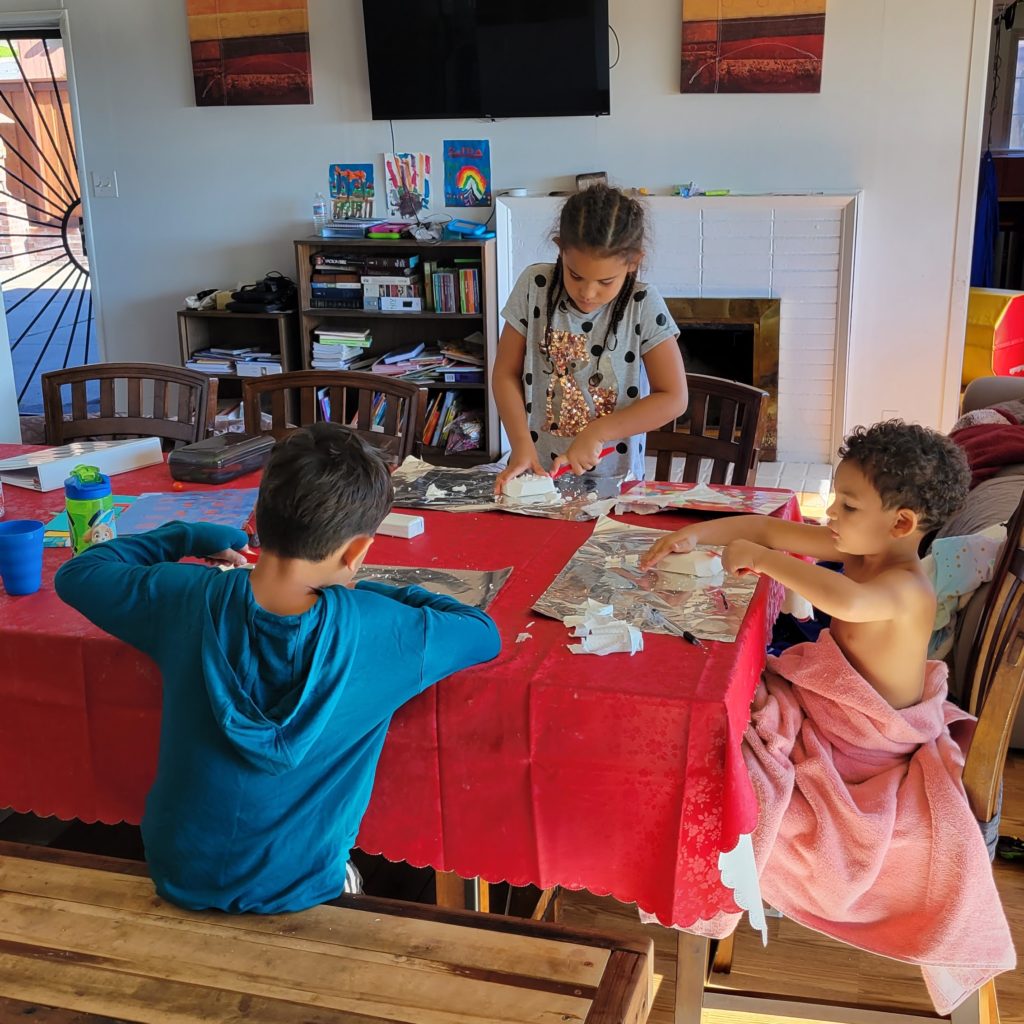I know that many Christians have strong feelings about celebrating Halloween, but I have always been much more uncomfortable with celebrations of Christmas than Halloween.
Christmas is allegedly a celebration of the birth of Christ, but that often gets lost in the message of Santa, trees, and consumerism. Even in Christian homes, the tinsel and lights and presents overtake the little manger on the mantel. Jesus was not born in December, but no one knows when his exact birthday was; so celebrating it in December works, as long as we can keep the focus on the celebration of Him. I read Braiding Sweetgrass this year, and among the many important lessons from the book was a new perspective on the American celebration of Christmas. Her discussion of Windigo in the American heart made me reconsider the myriad of ways that the message of Jesus has been erased in lieu of chasing more possessions, more decorations, and bigger celebrations.
Over the years, I have observed the ways that other parents whom I highly respect celebrated Christmas with their families trying to figure out what fit our family the best. Our church did not have traditional carol services on Christmas Eve or Christmas Day, so that removed an easy option. One family I knew focuses on celebrating the birth of Christ for the whole month of December rather than only on December 25. My friends in England visited one another’s houses throughout the season, eating Christmas cake and other wonderful traditional Christmas foods. Another family didn’t celebrate Christmas at all, and others have much more traditional celebrations with stockings, trees, and Santa.

Especially because our children have reached an age at which they can remember Christmas, Afa and I wanted to establish some traditions for our family that would focus on the birth of Jesus. To that end, we bought a curriculum called A Connected Christmas. It is a Charlotte Mason curriculum that replaced our regular daily work with Bible reading, hymn study, art study, and projects focusing on connecting with my children during the Christmas season instead of buying more and more presents. The initial investment was relatively expensive, especially because I bought all the picture books rather than borrowing them from the library. But my plan was that, Lord willing, this curriculum would become the foundation of our annual Christmas traditions for the next several years. The lessons are short enough that they could be done after school if you wanted to include this with students who also attend school during the day.
I started the curriculum on December 6, the Monday after Thanksgiving. It has fifteen days worth of lessons, so starting at that point allowed me a few flexible days that we could miss the activities and still complete the curriculum by Christmas, which thankfully is exactly what happened. The first week, as is often the case, went the most smoothly. I had some time over the Thanksgiving holiday to prepare all the lessons and activities for the first week. It was the first time that my kids heard the stories of the multiple angel visits that occurred throughout the Christmas story, so I kept my expectations relatively low for their narrations this year.
The children loved the stories and the projects. In fact, they woke up each morning and asked what the project would be for that day. I loved the projects because they gave us a fun activity to complete in the evenings, but they also created decorations for our home. We had to throw away all our Christmas decorations early in the middle of 2020 because a rat had died in our garage. Sparing you all the gory details, trust me that the decorations were no longer usable. Our Christmas in 2020 was scaled back significantly because we were moving and we all had Covid, and this was the first time I realized we didn’t have any way to decorate. Our curriculum came to the rescue as we made orange and popcorn garland, soap carvings, Swedish hearts, and other projects that peppered our living room with homemade joy. As the kids get older and the projects naturally become more elaborate, it’s likely the decorations will cover our living room, which will be beautiful.

We even loved the projects that did not turn out the way that they were supposed to, specifically the molasses candy. I was so excited to make molasses candy because I loved Laura Ingalls Wilder growing up. I remember trying to make molasses candy one time when it snowed, but it didn’t work at all. With my second chance to emulate the Ingalls family all prepared, it was another candy failure. However, Ana Lia loved playing with the sticky mess that was the consistency of slime.
I enjoyed using the curriculum because it was written in the same style that I write lesson plans, but someone else did all the work. It also allowed me to skip projects on days that I didn’t have the bandwidth to make a huge mess with the kids, and there were a few days like this over the course of December. It allowed us to dive more deeply in the Christmas story than I would have done on my own. The story seems relatively short, so I loved the way the curriculum broke it up over the course of 15 lessons. I also appreciated the art and poetry selections because those are my weakest areas of study.
There were a few aspects of the curriculum that my kids were not ready for, so it will be fun next year to add some more to it, growing it a little each year. They are not writing yet, so we did not do any copywork. And we continued with a regular schedule of Scripture memory rather than memorizing the recommended weekly Scripture. However, we read the Scripture each day and discussed the meanings of the words the kids did not understand.

I will continue using this as the foundation of our Christmas traditions, but there are a few things I will change in future years. The biggest problem with the curriculum is the lack of diversity in the picture books. For next year, I will purchase several books from this list so that my children see characters in their Christmas stores who are not only white. I will also purchase a nativity scene that we can use to visualize the characters of the story.
On Christmas morning, we sang Christmas carols as a family, lit a fire in the fireplace (our first time since we moved in a year ago), and let the kids open their presents while on video chat with family in Tennessee. It was a great way to wrap up our study of the birth of Christ.

Other traditions we may try in future seasons:
- Finding a live nativity – I looked for one the week of Christmas, but most of them in our area happen earlier in the month. Next year, I will search for schedules at Thanksgiving.
- A Jesse Tree – reading the Bible story of one member of Jesus’ family tree and adding a branch or an ornament representing that family member on each day of December
- A mobile nativity scene – Adding a member of the nativity scene each day, saving Jesus for Christmas Day and moving the Magi around the house until January 6, demonstrating it took them longer to arrive.
- A chapter per day of Luke – There are 24 chapters in the book of Luke, so reading one a day starting on December 1 allows the family to hear Jesus’ life story before Christmas Day.